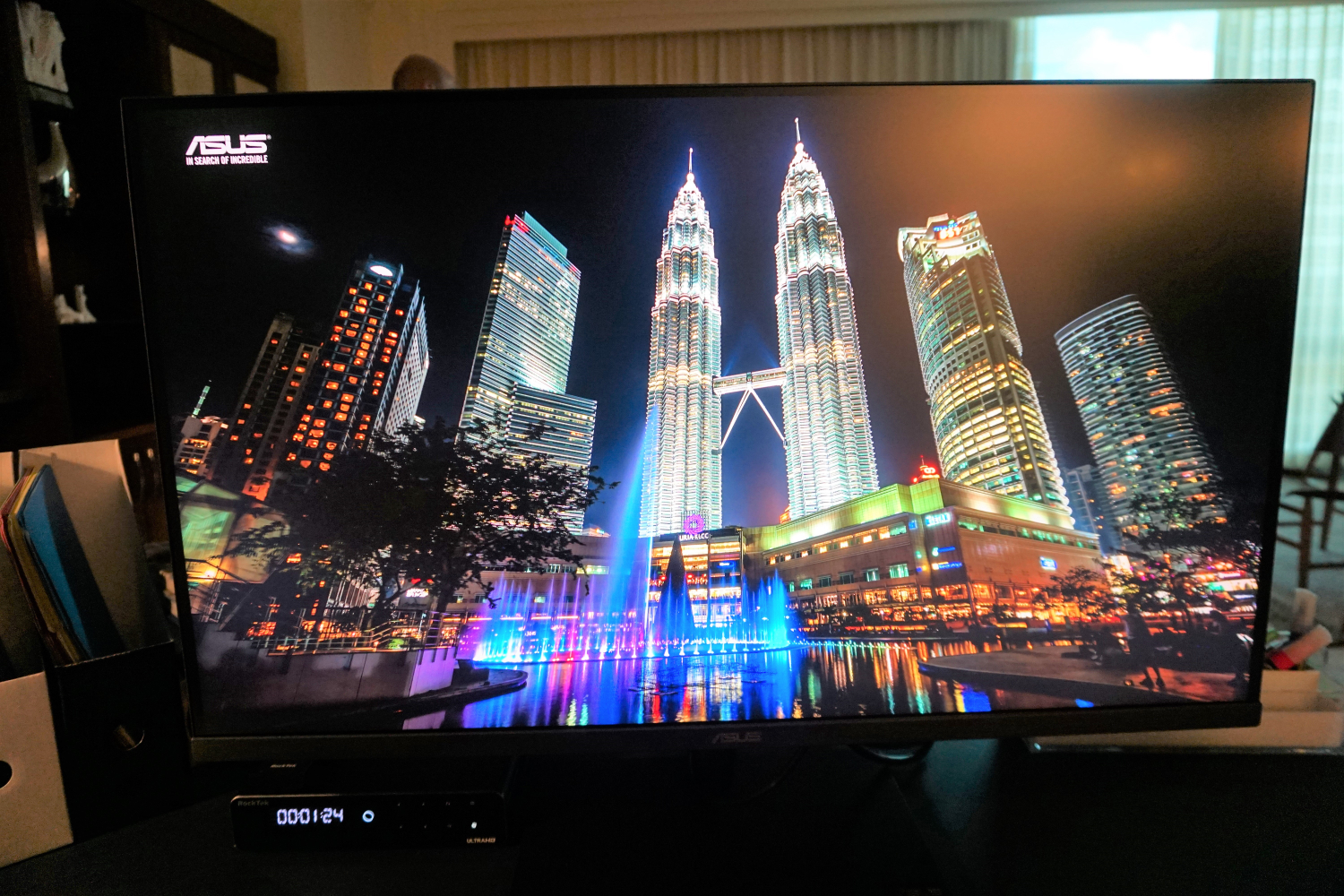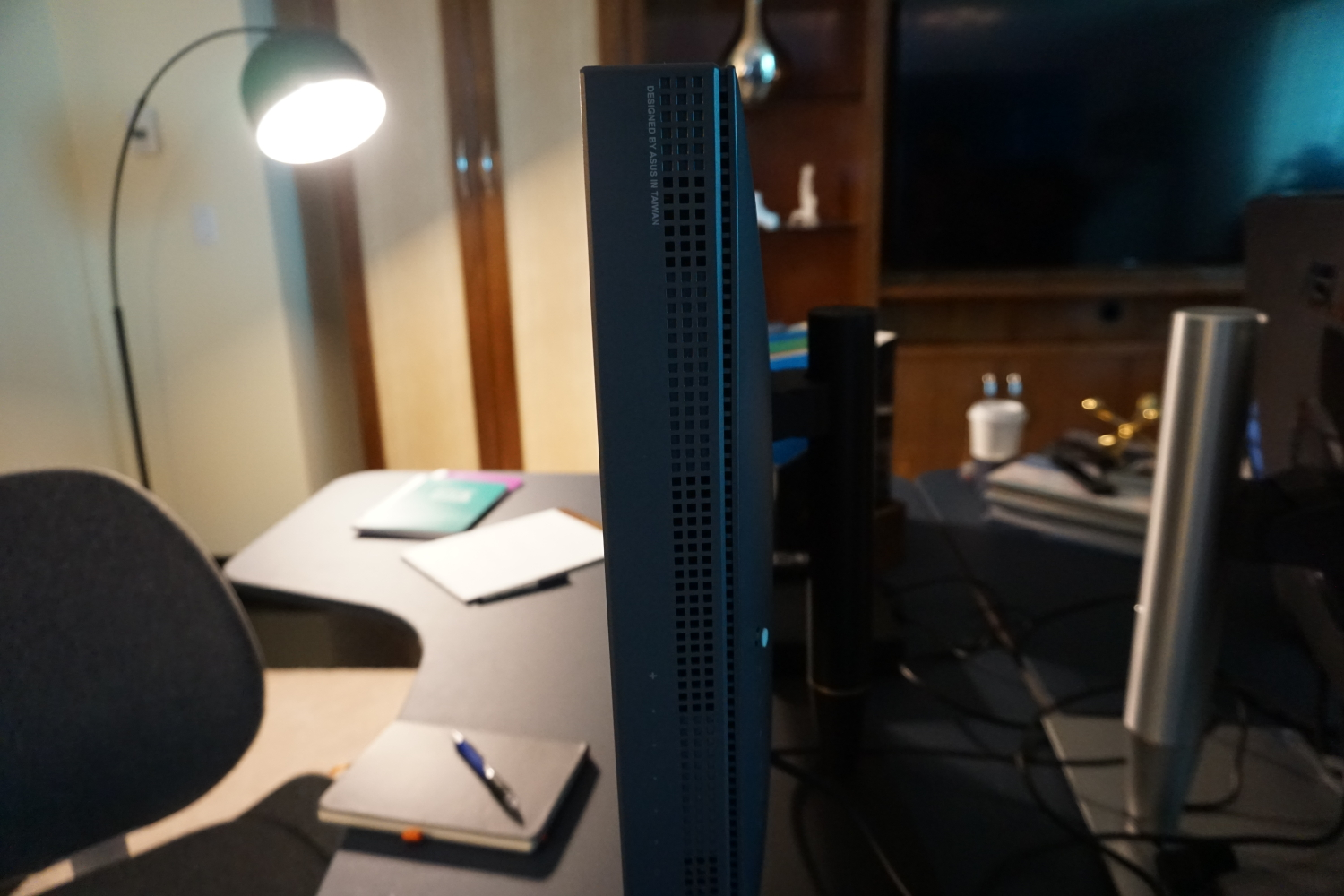Asus Inches Closer to OLED With 1,200-Nit, Mini-LED Monitor
Asus is getting real bright with its upcoming ProArt PA32UCX 32-inch monitor. Announced at the CES tech show in Las Vegas today, the monitor can reach a whopping 1,200 nits of brightness and is also said to be the first monitor with a mini-LED backlight.
Mini-LED: A Precursor to OLED
We chatted with Asus about the benefits of mini-LED. Of course, with the LEDs being miniature, you can pack more of them into a display, in this case about 1,025. This helps keep that 1,200 nits true and consistent throughout the image.
While a mini-LED backlight won’t give you the same look as an OLED panel would (never mind that OLED monitors are not currently readily available). The image will appear less inky, but it does get rid of that halo effect seen in monitors with regular LED backlights.
For comparison, consider that if this 32-inch professional monitor used traditional LEDs, it’d have about 385 LEDs. Meanwhile, a general use monitor of that size will pack between 70-90 LEDs approximately. Clearly, you get more LED for your buck with this tiny form factor.
As mentioned, we’re all still waiting for OLED to make their way into consumer and even professional-level monitors. However, Asus believes mini-LED is just a step away from micro-LED, which it expects could potentially have equal performance to OLED, and two steps away from glorious OLED.
That backlight also has 1,000 zones of dynamic dimming backlight control, for improving contrast ratio and getting the most out of HDR content.
Aimed at creatives, the ProArt PA32UCX supports DCI-P3 and AdobeRGB wide color gamut with 10-bit color. Ports include two Thunderbolt 3 and one each of DisplayPort and HDMI.
Get Tom's Hardware's best news and in-depth reviews, straight to your inbox.
Asus hasn’t released pricing or availability information yet, but we expect to see the ProArt PA32UCX in stores this year.

Scharon Harding has over a decade of experience reporting on technology with a special affinity for gaming peripherals (especially monitors), laptops, and virtual reality. Previously, she covered business technology, including hardware, software, cyber security, cloud, and other IT happenings, at Channelnomics, with bylines at CRN UK.
-
Pedasc I was looking into a new television and OLED has come down nicely in price but apparently it still has a problem with permanent burn-in. If so this may be a much better solution for a computer monitor anyway. Apparently microLED solves this but is only going to be available in large expensive displays for a while.Reply -
ThisIsMe Yeah OLED still has huge issues with burn-in. Also it cannot nearly reach the brightness levels of LED alternatives, even if blacks are much clearer it doesn't do you much good if you need to have an almost dark room to make use of the extended contrast ratios of OLED displays. And these are the two main reasons why Plasma suddenly disappeared years ago, even though it's probably one of the best display technologies so far when it comes to motion and image smoothing. Too bad it's been all but abandoned. Could probably have much cooler, lighter and more power friendly devices by now.Reply -
robertelia I have the 2016 65 oled and I have zero burn it. and even if it appears it disappears immediately. they blow things off proportion just like they did with plasma. which is still the king. specially pioneer kuro. as for led and lcd they are good cheap alternative. still shitty viewing angle and God forbid you have a dark room a disaster.Reply -
Vaping_Gamer Im 100% behind @robertelia, been using G OLED C6P as my PC Monitor for 3 years and it doesnt have any "huge issues with burn-in", the burn in is Samsung anti-OLED propaganda repeated by ignorant and jealous peopleReply -
mlee 2500 Yeah I really want to get an OLED, but both my living rooms get ALLOT of natural light and I'm concerned an OLED screen won't be bright enough during the day.Reply

